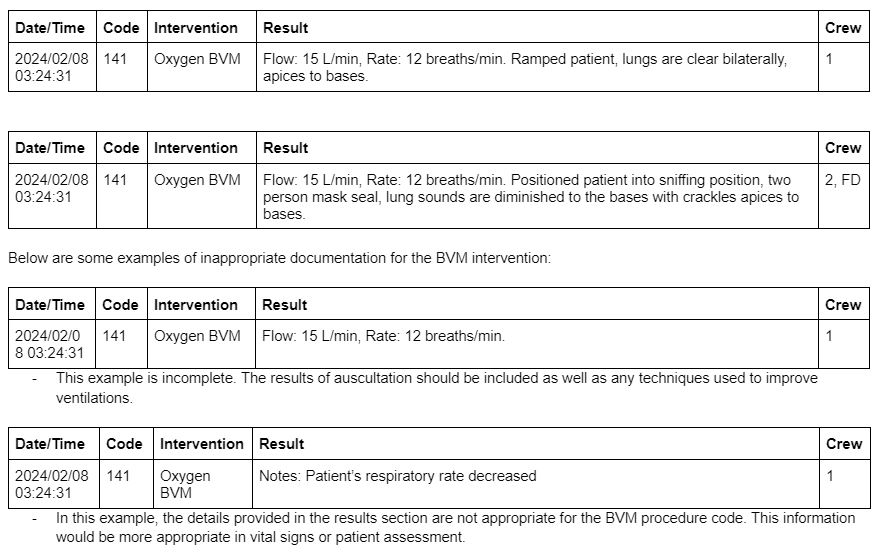
Published: 01 March 2024
Views: 528
March Tip of the Month
Positive Pressure Ventilation
Any patient that needs respiratory support with positive pressure ventilation (PPV) requires the use of a bag valve mask (BVM). In order to ensure this intervention is successful, NWRPCP recommends the following steps:
- Optimize patient positioning by placing them in the sniffing position to align the three anatomic axes: oral axis, pharyngeal axis, and laryngeal axis (see image below). This will ensure the flow of oxygen follows the path of least resistance.
- Utilize two person mask seal when resources are available
- Consider using ‘MR. SOPA’ to improve ventilations
- Mask - consider lifting the face into the mask rather then pressing the mask into the face to achieve an appropriate seal. In addition, consider changing the size of the mask if applicable.
- Reposition - reposition the head to open the airway; consider the sniffing position
- Suction - suction the oral phayrnx
- Open the airway - consider airway adjuncts: OPA and/or NPA
- PEEP - not applicable to PCP/ACP scope of practice
- Advanced Airway - consider using advanced airways; SGA and/or ETT
- Apply EtCO2 monitoring
- Confirm ventilations are achieved by auscultating
- Document accordingly
A: Incorrect position B: Sniffing Position
The following are examples of appropriate documentation when using a BVM:
When documenting the result of a BVM intervention, be sure to include the flow rate, breathing rate, and the results of auscultation and any techniques or maneuvers used to enhance ventilations.
Previous Tips
-
Winter Emergencies: Recognition and Care for Hypothermia and Frostbite
-
November Tip of the Month - Not "Just" the Flu: Recognizing High-Risk Respiratory Illness
-
October Tip of the Month - Diabetic Emergencies
-
September Tip of the Month - Sepsis
-
August Tip of the Month - Mass Casualty Incidents
-
July Tip of the Month - Breaking down Burns
-
June tip of the month - High-Quality CPR & Defibrillation
-
May Tip of the Month - Prehospital Trauma Management
-
April Tip of The Month - Paramedic resilience strategies; recognizing and managing burnout
-
March 2025 Tip of The Month - Identifying Intimate Partner Violence (IPV) in Prehospital Care
